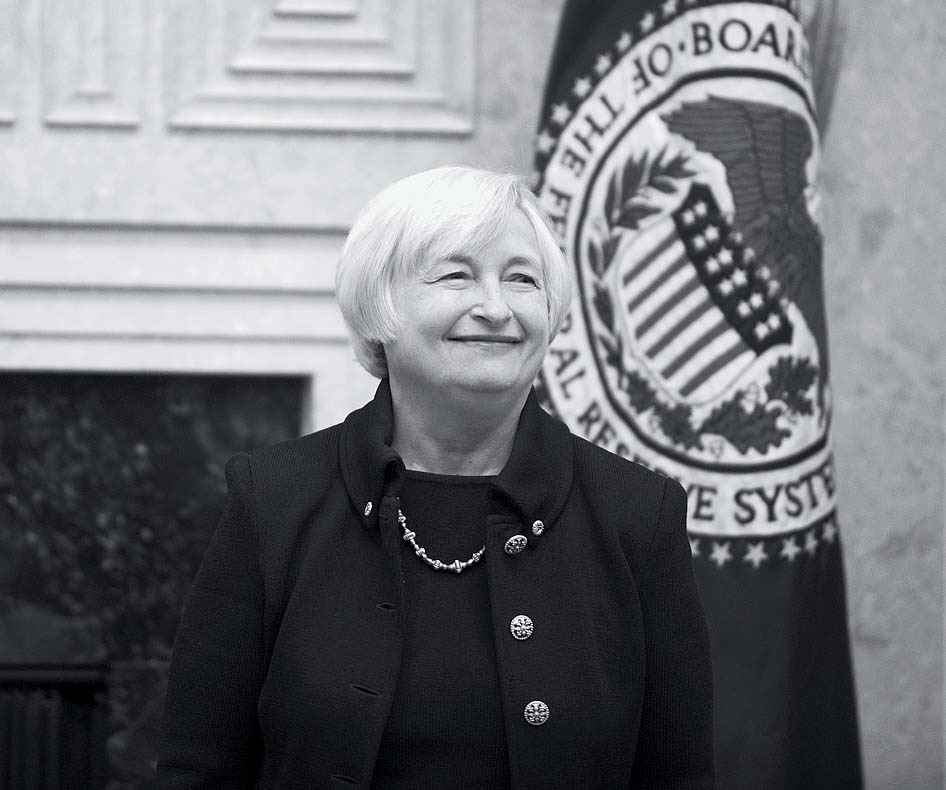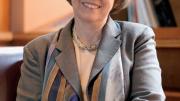Crimson Tiger
Molecular biologist and geneticist Shirley M. Tilghman, LL.D. ’04, president emerita of Princeton, has been elected a Fellow of the Harvard Corporation. She began serving as of January 1, filling the vacancy created by the sudden death of James F. Rothenberg ’68, M.B.A. ’70, last summer. Tilghman joins fellow education leaders Lawrence S. Bacow, former chancellor of MIT and president of Tufts, and Nannerl O. Keohane, president emerita of Wellesley and Duke, on the 13-member senior governing board. She brings to the Corporation command of the life sciences and broad engagement with Princeton’s outstanding engineering program, significant changes in campus residential life, and the expansion of its performing arts offerings and facilities. Read a full report.
Encouraging Entrepreneurs
As universities foster student and affiliate start-ups (“Inside Startup U,” on Stanford, The Chronicle of Higher Education; “Universities Race to Nurture Start-Up Founders of the Future,” The New York Times), Harvard’s iLab has spawned the Innovation Launch Lab for alumni, just across Western Avenue. And now the Business School and its Arthur Rock Center for Entrepreneurship have taken the show on the road, introducing the HBS Startup Studio in Manhattan. A “gathering place” for local entrepreneurial alumni and a “workspace for New York-based teams,” it welcomed an initial nine enterprises, ranging from an online-fitness firm and a maternal nutritional-beverage company (Bundle Organics) to Tootelage, which supplies educational content for at-home learning. Applicants are required to have at least $500,000 in seed funding and fewer than seven employees.
Aiming at Endowments
Several years after U.S. senator Charles Grassley (R-Iowa) aired proposals to mandate that university endowments distribute 5 percent of their assets annually (as foundations do), and perhaps be required to spend much of that money on financial aid (see “Endowments—Under a Tax?” July-August 2008, page 65), another legislator is toying with a similar idea. Bloomberg reported in January that U.S. representative Tom Reed (R-New York) is drafting legislation directing schools with large endowments to spend 25 percent of endowment income on financial aid for lower-income students—or risk losing their tax-exempt status. Depending on how income and need were defined, Harvard, with a $4.7-billion endowment investment return in a good year like fiscal 2014, could be required to spend much more than it actually did under its existing need-blind aid policy. That might pose problems in leaner years, like fiscal 2015, suggesting an unwanted degree of volatility from the formula, not to mention problems of conforming to donors’ gift intentions. Whether the proposal advances past the talking stage, or not, the idea of tapping endowments to enhance aid spending, without boosting public appropriations, continues to pop up. For another perspective, see the news about the Overseers slate.
A “Poverty Preference”
Amid concerns about lower-income students’ participation in elite higher education, the Jack Kent Cooke Foundation, a major source of scholarships, in January published “True Merit: Ensuring Our Brightest Students Have Access to Our Best Colleges and Universities.” Citing data showing that students from families in the lowest economic quartile comprise only 3 percent of enrollment at the most selective schools, while those from the top quartile comprise 72 percent of enrollment, the authors call for a “poverty preference” to factor into admissions decisions—much as legacy and athletic preferences do. Princeton president emeritus William G. Bowen, LL.D. ’73, and colleagues previously made a similar argument for a sort of socioeconomic affirmative action in Equity and Excellence in American Higher Education (see the excerpt, “A Thumb on the Scale,” May-June 2005, page 48); the problem they identified persists, and may even have worsened.
Schwarzman Scholars Debut
The first class of Schwarzman Scholars (a new master’s program based at Tsinghua University in Beijing, modeled on the Rhodes and Marshall scholarships) includes 111 students, six of them from Harvard: Bonnie Lei ’15 (a former organismic and evolutionary biology concentrator); Christian Føhrby ’14 (government); John Randolph Thornton ’14 (history); Jonathan Jeffrey ’16 (history); Rahim Mawji ’15 (applied mathematics); and Rugsit Kanan ’16 (sociology and economics).

Janet Yellen
Photograph courtesy of the Federal Reserve
Radcliffe Honorand
Federal Reserve chair Janet L. Yellen will receive the Radcliffe Medal, awarded annually to “an individual who has had a transformative impact on society,” on May 27, during Commencement week. The first woman to lead the Federal Reserve will participate in a conversation with Beren professor of economics N. Gregory Mankiw. The event also features personal reflections by Yellen’s immediate predecessor, Ben S. Bernanke ’75.
Nota Bene
Arts first first. Frank Gehry, Ds ’57, Ar.D. ’00, will become the first architect to receive the Harvard Arts Medal when he is honored on April 28, during the annual Arts First festival.
Masters move on. Moore professor of biological anthropology Richard W. Wrangham and Elizabeth A. Ross, master and co-master (as the titles have traditionally been; see page 17) of Currier House since 2008, have announced that they will relinquish those roles at the end of the academic year.
Writers’ roster. University affiliates nominated for the National Book Critics Circle awards (to be conferred March 17) include Bernbaum research professor of literature Leo Damrosch, Eternity’s Sunrise: The Imaginative World of William Blake; Charlotte Gordon ’84, Romantic Outlaws: The Extraordinary Lives of Mary Wollstonecraft and Her Daughter Mary Shelley; Vivian Gornick, RF ’08, The Odd Woman and the City; and professor of the practice of literary criticism James Wood, The Nearest Thing to Life.
The class of 2020. The College announced in early December that 918 of 6,173 early-action applicants (14.9 percent) had been granted admission to the class of 2020. In the prior year, 977 of 5,918 applicants (16.5 percent) were admitted, continuing a trend: a larger pool of early applicants, and a smaller cohort granted early admission. A total of 39,044 students applied, up 4.7 percent from last year.
Inventors three. The National Academy of Inventors, founded in 2010 by member universities and nonprofit institutions to honor academic work that results in patents, has admitted 168 new fellows, including: Wyss professor of biologically inspired engineering Jennifer Lewis, who aims to develop an artificial kidney via 3-D printing (see Harvard Portrait, November-December 2013, page 62); Folkman professor of vascular biology Donald E. Ingber, who is also professor of bioengineering and director of the Wyss Institute (see “Mimicking Organs,” January-February, page 12, a report on his “organs on a chip”); and professor of pathology Guillermo J. Tearney, who works on noninvasive optical imaging.
Pritzker honorand. Alejandro Aravena, a former faculty member at the Graduate School of Design, has won the Pritzker Prize, conferred annually on an outstanding architect. Atypically, his firm, ELEMENTAL, based in Santiago, Chile, was recognized not for its trophy buildings, but for designing very low-cost housing units whose occupants, in many cases, finish and extend the structures on their own, as their resources permit. The work was featured in “For Santiago’s Poor, Housing with Dignity.”
Cyber studies. The Belfer Center for Science and International Affairs, at the Harvard Kennedy School, has received a $15-million gift from its eponymous supporters—Robert (J.D. ’58) and Renée Belfer, and their son Laurence (’88)—to launch a project on cyber security.
Proxy profile. The Corporation Committee on Shareholder Responsibility revealed in its 2015 annual report that Harvard voted in favor of shareholder proposals for corporate disclosure of political and lobbying expenditures. The committee abstained on certain proposals concerning greenhouse gases and global warming, in line with the recommendations of its advisory committee; abstained on and opposed two proposals on genetically modified nutritional ingredients; and abstained on a resolution on drug pricing, noting that “profits on effective ‘blockbuster’ drugs help fund research and development.”
Top teachers. The Fannie Cox Prize for Excellence in Science Teaching—for exemplary work in introductory courses, and accompanied by a $10,000 personal award and $40,000 in support for teaching and research—has been conferred on Rumford professor of physics and McKay professor of applied physics Jene Golovchenko and professor of astronomy John Asher Johnson. (Johnson’s work was described in a Harvard Portrait, January-February 2014, page 23.)
Miscellany. Susan Holman, M.T.S. ’91, a senior writer at the Global Health Education and Learning Incubator, has won the 2016 Grawemeyer Award in religion for Beholden: Religion, Global Health, and Human Rights. Gary Haugen ’85 and Victor Boutros, Ed.M. ’99, won the award for ideas improving world order for The Locust Effect: Why the End of Poverty Requires the End of Violence.…Yale began piloting its system of carbon charges, which are being tested on 20 campus buildings—part of its effort to reduce emission of 300,000 tons of carbon dioxide annually… Diane Quinn, formerly senior vice president of Cirque du Soleil, has joined the American Repertory Theater as executive director…. The Boston Redevelopment Authority has approved construction of Harvard Business School’s Klarman Hall, an auditorium and meeting complex (see the roundup of capital-campaign news, January-February, pages 26-28); the BRA noted a $171-million project cost.









